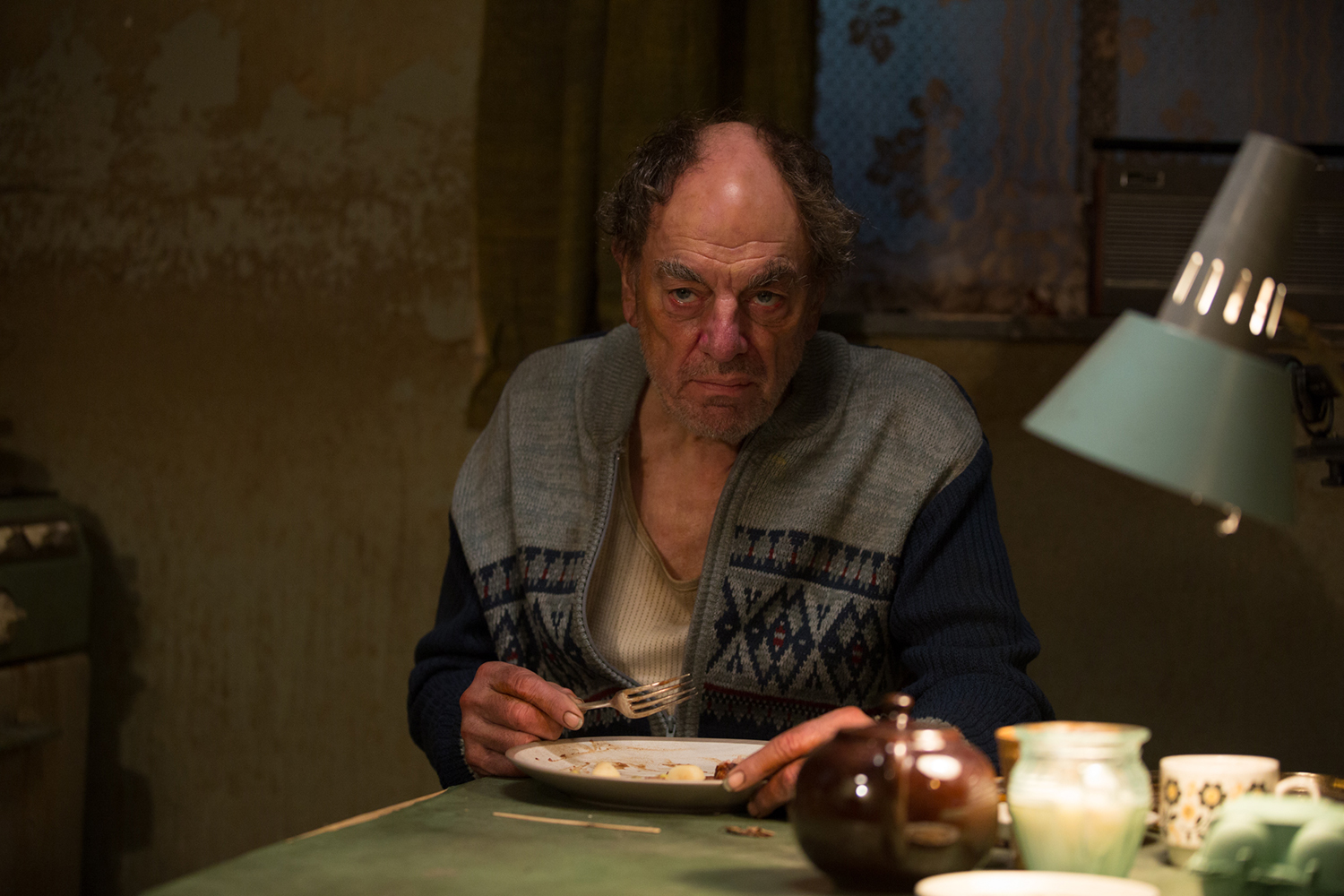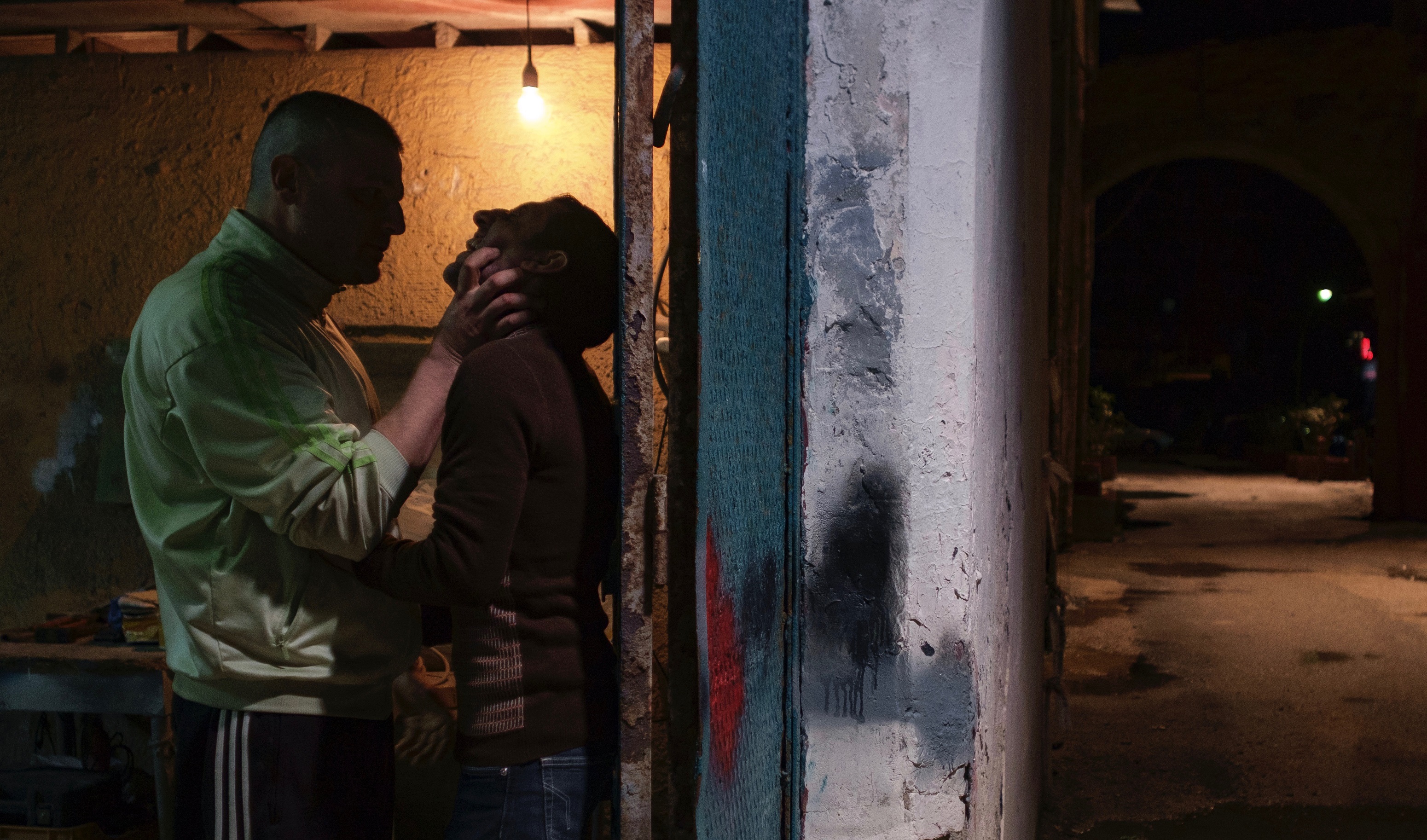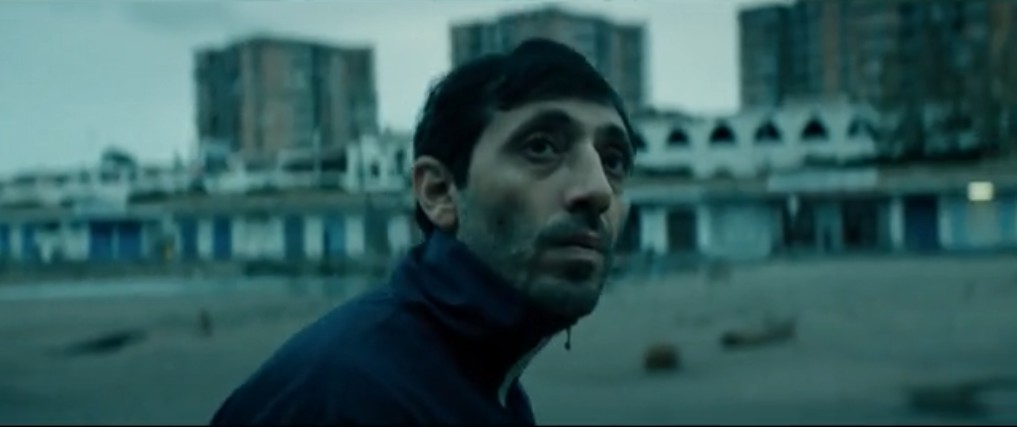Matthew Holness clearly knows a thing or two about low-budget British horror from the early 1970s. In TV comedy Garth Marenghi’s Darkplace he was as merciless as he was affectionate in ripping the genre apart. His debut feature as writer-director is an odd, woozy creation that pays just as overt homage, but Possum is in another tonal world altogether – one that’s brooding, clammy and unremittingly grim.
Former children’s entertainer Philip – disgraced, though we’re left to guess precisely how – makes a physical and psychological return to the charred, crooked remains of his boyhood home, carrying a big, brown leather bag. Try as he might, however, he cannot rid himself of the bag’s appalling contents, his most grisly and most personal creation: a spider-bodied, human-headed monstrosity of a puppet he names Possum. Philip unearths the book in which he detailed Possum’s dark mythology as a boy – and faces another dark ghost from his childhood, his repulsive uncle Maurice.
Holness gets exceptional performances from his two leads in what’s essentially an extended two-hander. Sean Harris is compulsively watchable as the wiry, nervy, deeply troubled puppeteer Philip, gifted with a stare so empty it’s ghastly, and with jerky, mechanical movements that make him seem much like a marionette himself. (How a figure so shambling, withdrawn and damaged could ever have been a children’s entertainer, however, is hard to imagine.) Arguably playing the role of Philip’s puppet master is Alun Armstrong (pictured below) as the wheedling, needling Maurice, spitting out opaque, Beckett-like lines with a snarling contempt, and always ready with the skin-crawling offer of a treat from his sweetie jar.
 Despite his two compelling leads, however, Holness struggles to deliver on the film’s slow-burning and quite lengthy set-up. Indeed, despite its relatively brief 85-minute length, Possum feels more like a short film that’s been stretched than a fully fledged feature. Moreover, its cloying evocations of atmosphere and dread, and its suggestions of imminent jump-scares (few of which, thankfully, materialise), end up far stronger and more memorable than its brief but brutal pay-off.
Despite his two compelling leads, however, Holness struggles to deliver on the film’s slow-burning and quite lengthy set-up. Indeed, despite its relatively brief 85-minute length, Possum feels more like a short film that’s been stretched than a fully fledged feature. Moreover, its cloying evocations of atmosphere and dread, and its suggestions of imminent jump-scares (few of which, thankfully, materialise), end up far stronger and more memorable than its brief but brutal pay-off.
But despite its unapologetic cap-doffs to the 1970s – its music from the Radiophonic Workshop, nods to the well-meaning terrors of public information films, stylised opening credits and stomach-churning palette of sickly greens and browns – what emerges in Possum is an examination of neglect and abuse that feels entirely of our own times. It’s a theme that’s only emphasised by the film’s own relentless, inescapable cycles of horror and dread, even if they finally make the movie rather repetitive.
Possum is far from flawless, but its suffocating journey into a shadowy maze of abuse and regret serves to infect the mind long after the movie’s over.
Overleaf: watch the trailer for Possum






 Marcello’s not making quite enough euros clipping claws and fluffing fur to take Alida on her dream holiday so he also sells cocaine on the side. It’s the dealing that traps him in the terrifying orbit of Simoncino (Edoardo Pesce, pictured above), a psychotic former boxer who thinks nothing of pulverising a fruit machine and then demanding his money back from the arcade owner. All the local mafioso agree that Simoncino is a problem but no-one wants to take him on. Marcello tries to appease him, like a dog trying to ingratiate himself with an abusive master. He not only gets suckered into Simone’s coke-fuelled burglaries but does jail time for him.
Marcello’s not making quite enough euros clipping claws and fluffing fur to take Alida on her dream holiday so he also sells cocaine on the side. It’s the dealing that traps him in the terrifying orbit of Simoncino (Edoardo Pesce, pictured above), a psychotic former boxer who thinks nothing of pulverising a fruit machine and then demanding his money back from the arcade owner. All the local mafioso agree that Simoncino is a problem but no-one wants to take him on. Marcello tries to appease him, like a dog trying to ingratiate himself with an abusive master. He not only gets suckered into Simone’s coke-fuelled burglaries but does jail time for him.  Garrone is a master of hyperrealism and bone-crunching violence. The action is set in the emptied piazzas and back alleys of a disintegrating southern Italian seaside resort. A lot of scenes take place at night in the murk of sodium lights; when there are daytime scenes, they are shot in desaturated colour. It’s not a pretty world, unless you’re a poodle having your fuzzy topknot sprayed for a dog show. First time actor Marcello Fonte (pictured above) is a great discovery, it’s as if Buster Keaton and Steve Buscemi had a son together and left him to grow up with bad teeth and a crooked nose. His journey from endearing stooge to avenging desperado is slow and graphic. Simoncino is a horror movie monster who seems destined to keep coming back, no matter the blows. There are no happy endings.
Garrone is a master of hyperrealism and bone-crunching violence. The action is set in the emptied piazzas and back alleys of a disintegrating southern Italian seaside resort. A lot of scenes take place at night in the murk of sodium lights; when there are daytime scenes, they are shot in desaturated colour. It’s not a pretty world, unless you’re a poodle having your fuzzy topknot sprayed for a dog show. First time actor Marcello Fonte (pictured above) is a great discovery, it’s as if Buster Keaton and Steve Buscemi had a son together and left him to grow up with bad teeth and a crooked nose. His journey from endearing stooge to avenging desperado is slow and graphic. Simoncino is a horror movie monster who seems destined to keep coming back, no matter the blows. There are no happy endings.

 The directors focus on a clutch of aspiring young international hopefuls, each covered in a brief thumbnail portrait. Outgoing Anjali from Kentucky, who has a project for detecting arsenic in drinking water, is aware that personality and presentation skills are just as important as scientific insight at ISEF. From the same school, the laid-back trio of Ryan, Harsha and Abraham are working on an AI project to collate stethoscope data online. German teenager Ivo has come up with a prototype flying wing aircraft, and slacker Robbie from West Virginia – who taught a computer to rap like Kanye West – has a head-spinning scheme to track how machine learning actually works, using (what else?) machine leaning. Coming from an impoverished background in rural Brazil, Myllena and Gabriel (pictured above) provide a striking contrast with their US and European co-competitors, and their project aims to prevent the spread of the Zika virus.
The directors focus on a clutch of aspiring young international hopefuls, each covered in a brief thumbnail portrait. Outgoing Anjali from Kentucky, who has a project for detecting arsenic in drinking water, is aware that personality and presentation skills are just as important as scientific insight at ISEF. From the same school, the laid-back trio of Ryan, Harsha and Abraham are working on an AI project to collate stethoscope data online. German teenager Ivo has come up with a prototype flying wing aircraft, and slacker Robbie from West Virginia – who taught a computer to rap like Kanye West – has a head-spinning scheme to track how machine learning actually works, using (what else?) machine leaning. Coming from an impoverished background in rural Brazil, Myllena and Gabriel (pictured above) provide a striking contrast with their US and European co-competitors, and their project aims to prevent the spread of the Zika virus.